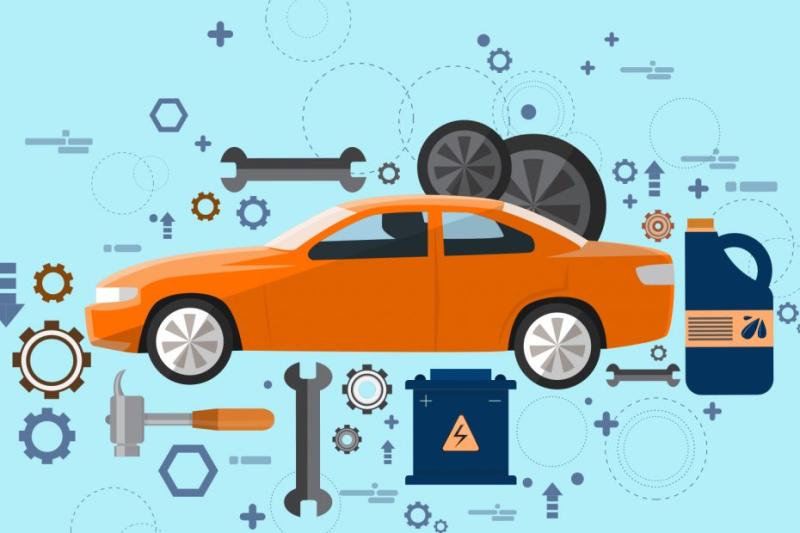Predictive Maintenance Techniques

Predictive maintenance (PdM) is a critical aspect of modern automobile engineering, enabling proactive management of vehicle maintenance through advanced techniques and technologies. This approach helps in predicting potential failures before they occur, thereby enhancing vehicle reliability, reducing downtime, and optimizing maintenance costs.
Predictive Maintenance Techniques in Automobile Engineering
Predictive maintenance uses various techniques and technologies to monitor the condition of vehicle components and predict when maintenance should be performed. Here’s a detailed look at some key techniques:
1. Condition Monitoring
Condition monitoring involves continuously observing the operational parameters and health of vehicle components to detect any anomalies that may indicate potential failures.
-
Vibration Analysis:
- Principle: Measures vibrations from components like engines, transmissions, and wheel bearings. Abnormal vibration patterns can indicate issues such as imbalance, misalignment, or wear.
- Technical Details: Vibration sensors (accelerometers) capture data which is analyzed using Fast Fourier Transform (FFT) to identify frequency components and detect abnormal vibrations.
- Application: Useful for detecting issues in rotating machinery and drivetrain components.
-
Temperature Monitoring:
- Principle: Measures the temperature of critical components to identify overheating, which could indicate potential failure.
- Technical Details: Temperature sensors (thermocouples or infrared sensors) monitor the temperature of engine components, brakes, and other critical systems.
- Application: Prevents overheating-related failures and ensures optimal operating temperatures.
-
Oil Analysis:
- Principle: Analyzes the condition of engine oil to detect contaminants, wear particles, and oil degradation.
- Technical Details: Oil samples are tested in a lab for viscosity, contamination levels, and the presence of metal particles.
- Application: Helps in detecting wear and tear in engine components and assessing oil change intervals.
2. Data Analytics and Machine Learning
Data analytics and machine learning techniques are used to analyze large datasets collected from various sensors to predict component failures.
-
Predictive Algorithms:
- Principle: Uses historical data and algorithms to predict when a component will likely fail based on patterns and trends.
- Technical Details: Algorithms like regression analysis, time-series analysis, and anomaly detection are used to forecast potential issues.
- Application: Helps in predicting failures in complex systems where manual analysis would be impractical.
-
Machine Learning Models:
- Principle: Machine learning models learn from historical data to make predictions about future component health.
- Technical Details: Techniques such as supervised learning (e.g., classification, regression) and unsupervised learning (e.g., clustering) are applied to large datasets to identify failure patterns.
- Application: Models are trained to recognize patterns in sensor data that precede failures, providing actionable insights for maintenance.
3. Oil and Fluid Analysis
This technique involves analyzing the properties of lubricants and fluids used in vehicles to assess their condition and predict potential failures.
-
Wear Particle Analysis:
- Principle: Detects metal particles in lubricants, which can indicate wear or degradation of engine components.
- Technical Details: Particle counters or spectrometers are used to quantify the size and concentration of particles in the oil.
- Application: Helps in identifying component wear and planning maintenance before severe damage occurs.
-
Chemical Analysis:
- Principle: Analyzes the chemical composition of fluids to assess degradation and contamination levels.
- Technical Details: Techniques like spectrometry and chromatography are used to determine the presence of contaminants and the breakdown of fluid additives.
- Application: Ensures fluid quality and identifies potential issues related to fluid degradation.
4. Predictive Modeling and Simulation
Predictive modeling and simulation techniques are used to simulate the behavior of vehicle components under various operating conditions to forecast failures.
-
Finite Element Analysis (FEA):
- Principle: Simulates the physical behavior of components under different loads and conditions to predict potential failures.
- Technical Details: FEA models use mathematical equations to simulate stress, strain, and deformation in components.
- Application: Used in the design phase to predict component performance and optimize designs for durability.
-
Computational Fluid Dynamics (CFD):
- Principle: Simulates fluid flow and heat transfer within vehicle systems to predict performance and identify potential issues.
- Technical Details: CFD models use fluid dynamics equations to analyze airflow, cooling, and lubrication.
- Application: Helps in optimizing cooling systems and assessing the impact of fluid dynamics on component performance.
5. Remote Monitoring and IoT Integration
Remote monitoring systems and the Internet of Things (IoT) enable continuous monitoring of vehicle components in real-time.
-
Remote Diagnostics:
- Principle: Uses telematics and communication systems to transmit data from vehicle sensors to a central monitoring system.
- Technical Details: Data is collected through onboard diagnostics (OBD) systems and transmitted via cellular or satellite networks.
- Application: Provides real-time insights into vehicle health and enables remote diagnostics and troubleshooting.
-
IoT Sensors:
- Principle: IoT sensors collect data from various vehicle components and transmit it to cloud-based platforms for analysis.
- Technical Details: Sensors are integrated with communication modules to send data to cloud services where it is analyzed and visualized.
- Application: Facilitates real-time monitoring, predictive analytics, and proactive maintenance planning.